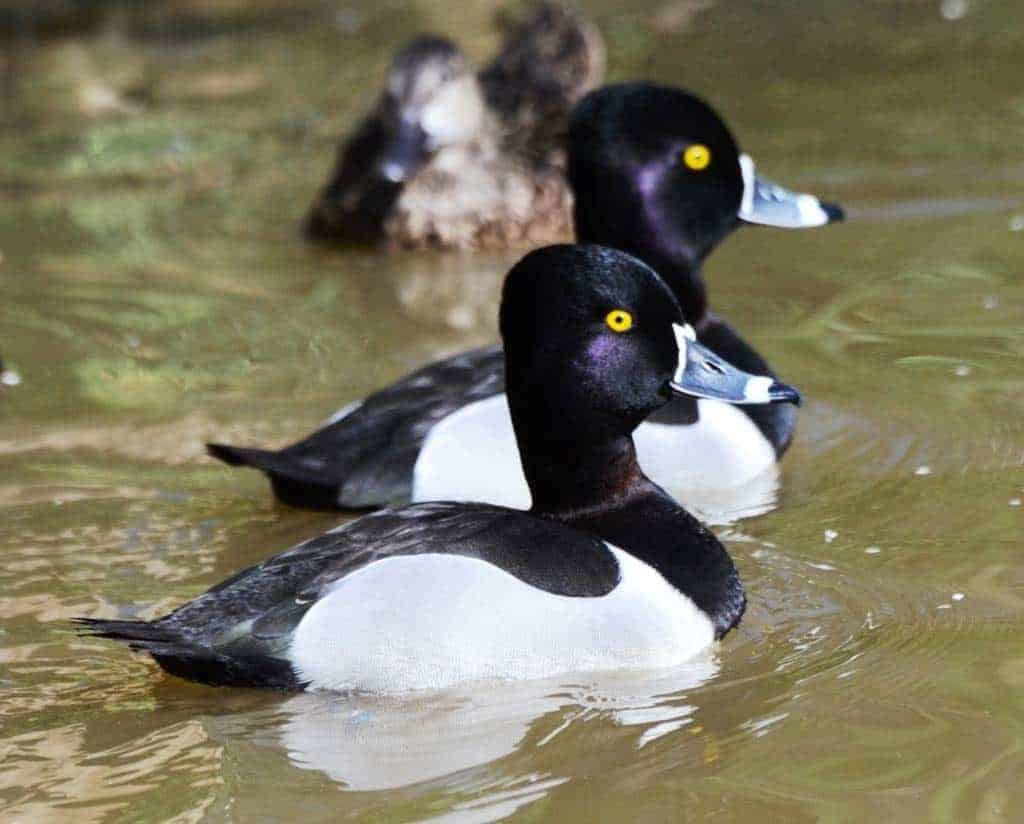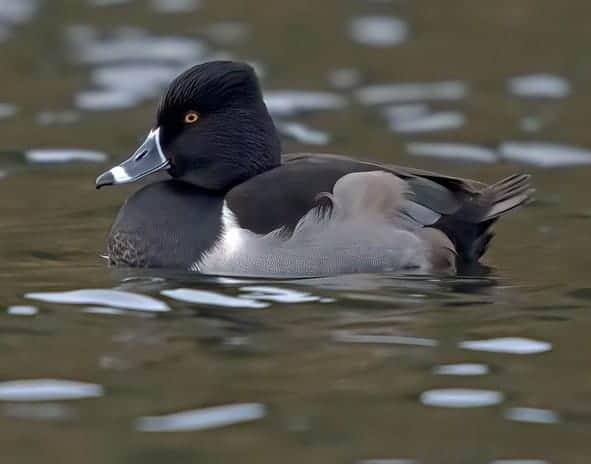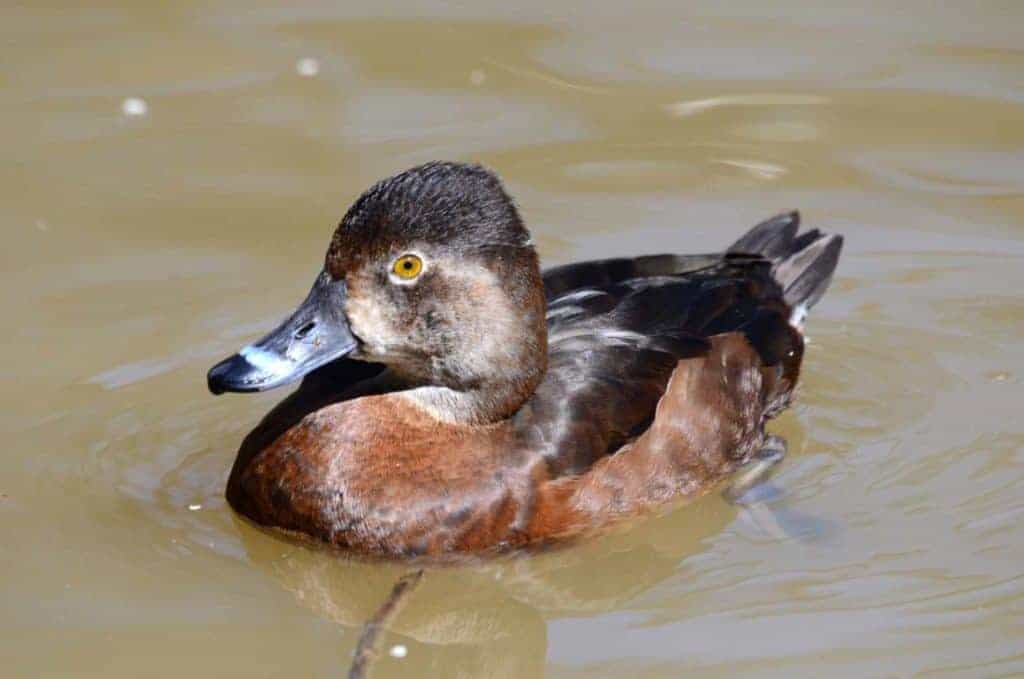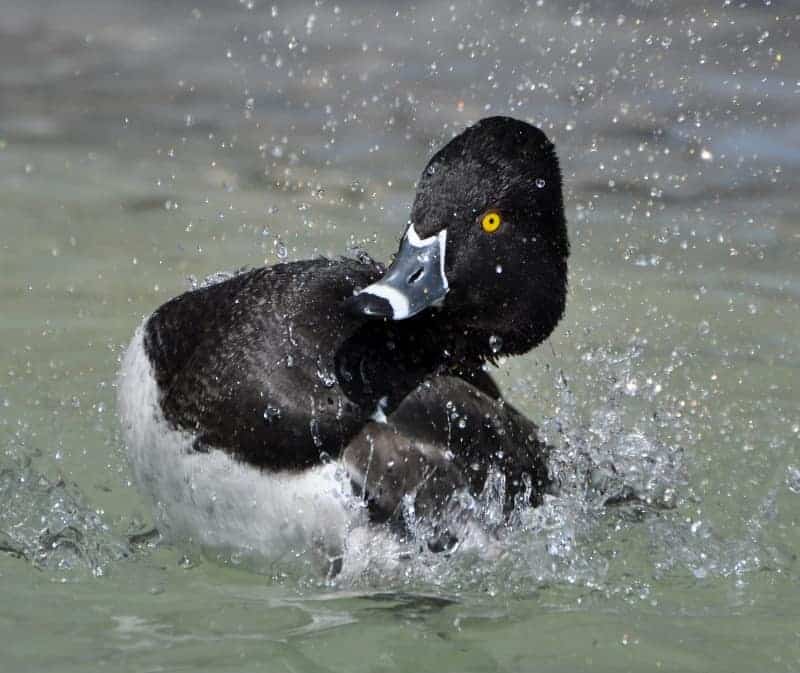Ring-necked Duck


Aythya collaris
The Ring-necked Duck is named for the brown collar across its black neck. This collar is hard to identify in the field; males can be identified by their pointed heads, bright yellow eyes, black body and light grey flank, quite visible at a distance. Both sexes carry a pale ring around the bill, close to the bean, and females have pale feathering around the base of the bill and a browny-grey body. Eclipsing males and juveniles are duller than the female.
This North American native nests across much of Canada, Alaska, and the Arctic, with a population also breeding year-round in the northwestern portion of the continental United States. There is a large wintering range across the southern United States, extending into the northern tip of South America. Each year, vagrants appear in Britain, though escaped captive birds are considered with these reports.


Ring–necked Ducks are fairly well-established in captivity, likely due to their preference for freshwater environments, both for breeding and for wintering. They are omnivores, so most captive diets satisfy their needs well. Females build nests near water using available vegetation. They will lay 8-10 eggs, which hatch in about 28 days. Females rear the young on their own.
Share this page